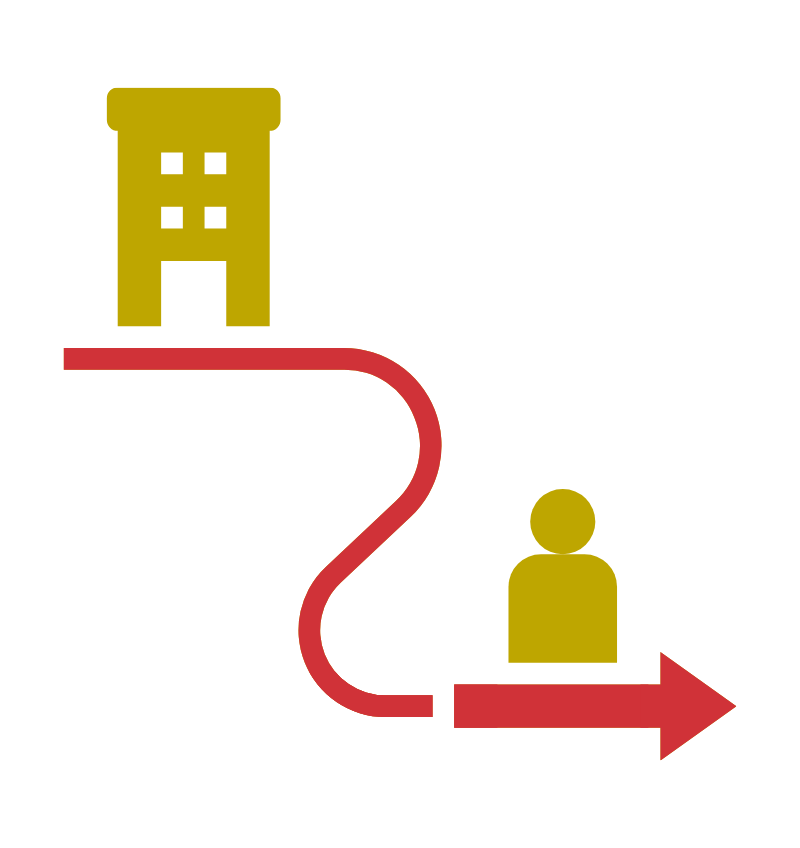For many people, the events of recent years—including the pandemic, a national racial reckoning, and a heightened political culture—have caused them to reconsider their careers. We hear from more and more for-profit professionals daily who are looking to make the transition to the nonprofit world. They are eager to join organizations that are mission-driven, whose values align with their own, and who have a positive impact on the world. If this is the case for you, here are six steps you can take to increase your likelihood of securing a nonprofit role.

1. Volunteer.
Volunteering is a great first step. It will allow you to explore your passion, gain a better understanding of a nonprofit’s operations, and introduce you to people in the field, who may be able to offer information and/or support as you consider pursuing a role. Keep in mind that there is a wide range of volunteer opportunities to consider – everything from helping out at your child’s school, to fundraising for your church, serving on your college’s alumni board/reunion committee, or taking shifts at your local food bank or soup kitchen.
• • •

2. Network, network, network!
Begin with your current network – do you know of anyone in the nonprofit space who would be willing to discuss their career with you? Consider local membership organizations as well. If you are in the Greater Boston or New York Metro area, Women in Development have local chapters that offer a calendar of learning and networking events and access to resources. Association of Fundraising Professionals is another highly active membership organization and has chapters nationally. You might consider reaching out to chapter members who work at organizations and/or in sectors you are interested in and asking them for 15-minute informational conversations. Take the opportunity to understand their roles, as well as the skills they look for when they are hiring staff.
• • •

3. Pursue learning opportunities.
Here is a non-exhaustive list of courses and programs you might consider to grow your understanding of the nonprofit sector, ranging from those that take a few hours, to those that take days or months:
Time Commitment: Hours
Content: Through a LinkedIn Learning license (or a 30-day free trial), you can access multiple LinkedIn Learning courses that cover topics such as using relationships to drive philanthropic growth, data science in nonprofits, developing a fundraising video, and how to overcome donor objections.
AFP Fundamentals of Fundraising Course
Time Commitment: 2 days
Content: AFP offers an introductory course to cover the foundational principles of fundraising.
Nonprofit Management Certificates
Time Commitment: Months
Content: A number of universities offer nonprofit management graduate certification programs, which can take up to a year. Options include Cornell University, Duke University, Georgetown University, Harvard Business School, Merrimack College, and Northeastern University, to name just a few.
• • •

4. Identify your transferable skills.
It’s likely that many of the skills you have gained in your for-profit roles could serve you well as a nonprofit professional. For instance…
- If you have experience in business development/sales, you could do well in a fundraising role. The most successful frontline fundraisers enjoy aligning the organization’s needs with the donor’s interests (just as you would have done with a sales prospect) and feel motivated by ambitious philanthropic goals – not unlike a sales goal!
- If you have experience as a consultant or account executive, you could also do well in fundraising. A primary responsibility for frontline fundraisers is developing lasting and mutually rewarding relationships with donors, just as consultants and account executives do with their clients.
- If you have experience managing staff, you would do well in a number of nonprofit roles, though operations could be an especially strong fit.
- Lastly, if you have held finance, human resources, or marketing positions at for-profit companies, those skills are directly transferable to the nonprofit sector.
Transitioning to the nonprofit world may also be easier if you select a sector/specific role that directly aligns with your previous work experience. For example:
- Professionals who have worked at pharmaceutical companies or other health-related businesses might focus their job search on academic medical institutions and hospitals.
- Professionals with ample volunteer experience at their alma mater could look into roles in higher education or at independent schools.
- Professionals with a legal background and experience managing trusts and estates could more easily transition into planned giving positions.
- And a general tip: Organizations with larger fundraising teams are more likely to be able to accommodate, train, and support someone with a for-profit background. Smaller organizations with fewer resources often have too much at stake to invest in a professional with a non-traditional background.
• • •

5. Check your assumptions.
For-profit professionals may wrongly assume that working at a nonprofit is less challenging and more slow-paced than a corporate position. However, that’s rarely the case. Nonprofit work is demanding, and you can anticipate a full plate and a potentially steep learning curve. That said, the opportunity for impact is much greater – and for many, that makes the challenges of a nonprofit role more than worth it.
• • •

6. Anticipate the questions nonprofit hiring managers will have about your background and interest.
As mentioned, making the transition from for-profit to nonprofit roles can come with a steep learning curve. Hiring managers want to know that you recognize this – and that you’re enthusiastic about and prepared for the undertaking. You can expect them to ask questions along these lines during an interview:
- Why are you interested in making the switch from for-profit to nonprofit? And why now?
- Why are you interested in our organization and this role specifically?
- What do you anticipate will be the greatest challenges for you? How will I be able to help you?
- What kind of resources (staffing, technical, etc.) are you accustomed to having access to? If you do not have that level of resources, how will you adjust?
- Do you have any volunteer experience?
Keep in mind, too, that to successfully transition to the nonprofit field, you may need to accept a more junior role than you currently have. This also could mean a salary adjustment. It’s a trade-off – but it will be worth it if you are truly committed to securing a role at a mission-driven organization. As your skills and knowledge grow with time, you will find opportunities to advance.


